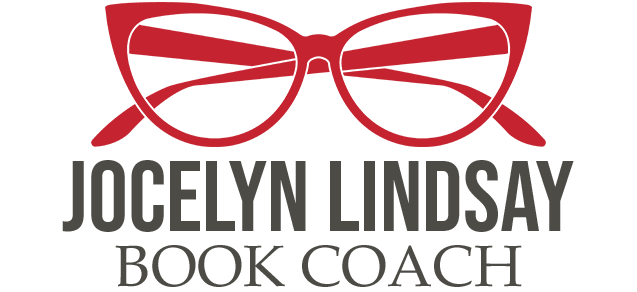uh, now what? what to do next with scene anatomy
Not everyone loves analyzing scene anatomy.
I received several responses to my last newsletter on scene anatomy, including this one from a client:
“This is very timely as well as a great reminder, and a wonderful checklist. I hate it. But even so, I’m currently doing this. And yeah, I still hate doing it.”
Analyzing scene anatomy feels like you’re slowing the process way down. Molasses on the bowling alley, as my mom would say.
Going back and examining every scene in your book (if you have a finished draft) can be painful. Just get to the good stuff, right?
BUT…
Understanding how scenes work is the cheese in the grilled cheese. Without it, you just have a couple pieces of bread hanging out on the counter.
Doing this scene anatomy work will to help you avoid two extremely common problems that I see all the time.
#1: Lacking narrative drive
Also, sometimes called Cause Effect, Causation, The Good Stuff.
Narrative drive keeps a reader turning pages like they’re eating popcorn.
It’s the fuel that makes your story go and it’s directly connected to the anatomy of a scene. And if you don’t have all six parts of a scene, or you’re missing a few, chances are you also don’t have narrative drive.
One consequence of this is something we hear all the time, Murky Middle, Middle Slump, Sagging Middle. Without narrative drive, your story won’t have enough fuel to get to the end.
3 ways to create narrative drive:
Your character has to want something that is difficult to get and they need to go after it.
(Step 1: want.)Your character has to fight obstacles to get what they want.
(Step 2, 3, 4, 5: obstacle, change, decision, action)Your character either gets or doesn’t get what they want.
(Step 4, resolution)
If they get it, now they need a new want. Go back to want, and start the process over.
If they don’t get it, now they need a new plan to get it. Go back to want, and start the process over. EXCEPT, the new plan should have greater risk, otherwise it’s likely to be episodic.
#2 Episodic scenes
Years ago I had an editor tell me my book was episodic. When I asked what they meant, we ended up in a circular conversation that sounded something ridiculous, like:
“Your book is episodic.”
“What does that mean?”
“It doesn’t hang together.”
“Uhm… Is that a bad thing?
“Yes.”
“How do I fix it?”
“Make it hang together.”
Not helpful. What I knew about episodic was from the television episodes. Not the same thing. I made it my mission to find out what an episodic plot meant and how to fix it.
An episodic plot is a series of scenes that don’t connect and don’t build on each other.
This is very common with journey stories, but you can find it in any story.
You have a character going after their want. They overcome an obstacle, they travel more, they overcome another similar obstacle with a similar outcome. Every part of scene anatomy in the series hits the same basic emotion, risk, consequences beat on and on till the end. Nothing really changes.
The biggest problem with this? It’s boring. And if you’re bored writing it, your reader is going to be bored reading it. We don’t want bored readers.
Once I understood what was happening in my story, I was able to immediately see that I had written a post-apocalyptic It’s a Small World Disneyland ride. My characters were just being shuttled from event to event, looking at cool stuff along the way.
Scene 1: Oh look, mutants! Run away.
Scene 2: Oh look, evil scientist! Run away.
Scene 3: Oh look, an army of bad guys! Run away.
How do you fix an episodic plot? With events that connect and escalate along the journey.
Continuing to use my story as an example, I could have gone in and connected the events and increased their risks.
Scene 1 Mutants: Run away! The characters barely escape with their lives.
Scene 2 Evil scientists: They made the mutants and they want to do the same to the characters. Characters have no choice but to fight now. (Increase the risk.)
Scene 3 Army of bad guys: The scientists work for them, and they want to create a new world and they’re trying to convince the characters to help them by giving them shelter and food. The characters never see the betrayal from their best friend coming who had been working for the bad guys all along. (Increase the risk and the emotional cost.)
You need to keep making it worse and building on the worse that came before.
(Worse can be external, internal, or both.)
An episodic story is the antithesis of narrative drive. They’re also avoidable once you understand the mechanics of what’s going on with them. Putting into a practical perspective, understanding scene anatomy will help you save time, energy, and if you’re working with a book coach or development editor, money.
Send me an email if you found this helpful or you have any questions.
Hello!
My name is Jocelyn.
Story warrior, book lover, day dreamer, gardener, and creative. I help serious writers roll up their sleeves, get their novel ready for publishing, and reach readers. When I’m not elbow-deep in the story trenches, I’m outside world-building in my garden and battling weeds with my three criminal mastermind cats.
GET IT NOW
Don’t write another chapter until you grab the 10 Step Chapter Checklist.
Transform your chapters from blah to badass.


